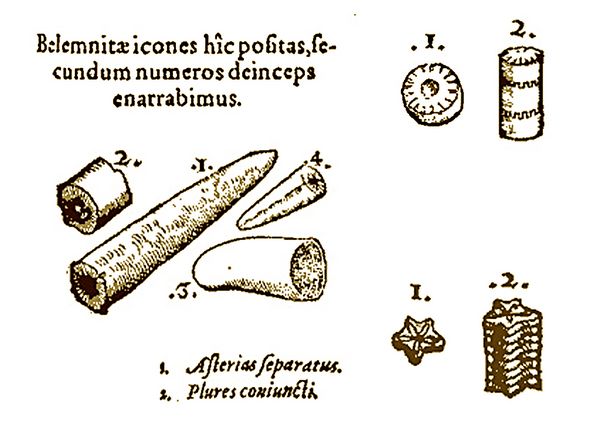Athena Review Image Archive ™
Geissner drawing of belemnites (1565)

Drawing of belemnites (Geissner 1565)
In his 1565 book On Fossil Objects,
Conrad Geissner considered the tubular-shaped guards of belemnites and
stacked peduncles of crinoids to be minerals. Geissner's drawing shows
belemnite guards at left, which he called
"arrow-shaped forms", and crinoid penducles at right (top: Encrinus
liliformis; bottom: unidentified, star-shaped species), which he considered to be natural crystal forms (Gessner 1565).
In the same work, however, Geissner compared the closely similar forms of two echinoderms, a modern sea urchin and a lithified heart urchin, and concluded that the latter must have been a living form, and thus was an echinoderm fossil.
Geissner’s
mixed views on recognizing fossils, and distinguishing them from
natural objects, shows that, even for the most skilled naturalists of
that era, familiar with details of many live animals and plants,
there seemed usually no compelling reason to think their resemblance to
petrified objects was any more than a mere coincidence. Only with the
gradual documentation of fossil evidence (of which Geissner was a
pioneer) came the realization that fossils were widespread among
sedimentary rock formations.
References:
Geissner, Conrad 1565
Copyright © 1996-2020 Rust Family Foundation (All Rights Reserved).